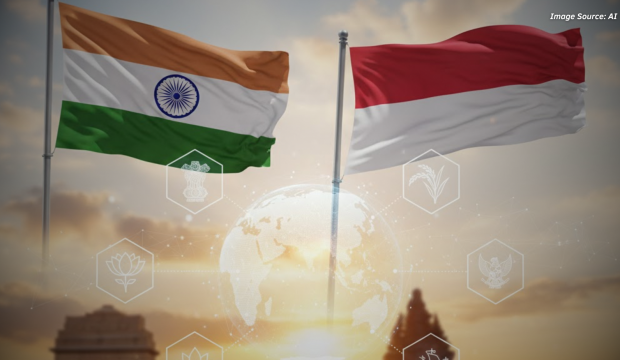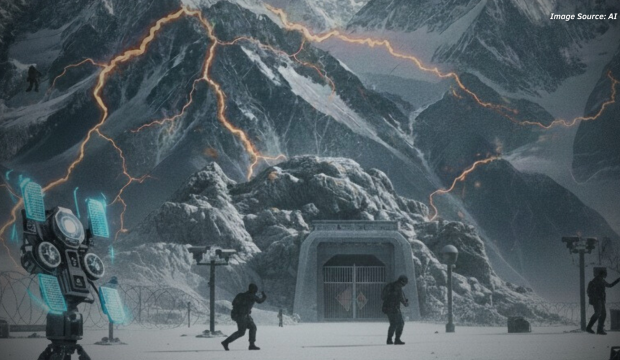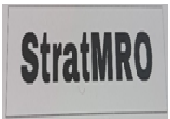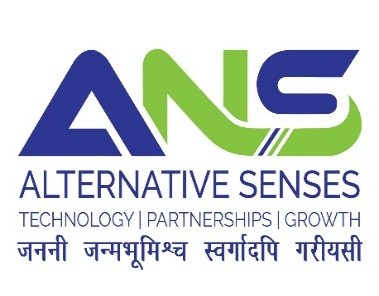Introduction
The QUAD’s regrouping in 2017 marked an extremely pivotal moment against the backdrop of vexed geopolitical contestations in the Indo Pacific. As countries manage to navigate the power rivalry between US and China, the functions and operability of minilaterals have been frequently discussed and debated. The functions carried out by the QUAD has been limited to but not withstanding major security concerns in the Indo-Pacific. Since its re-grouping, QUAD has established deliverables, including working groups on technology, climate, health and vaccine[1]. Additionally, the grouping has simultaneously touched traditional security aspects through partnerships on Cybersecurity, Cable Connectivity, Maritime Domain Awareness (MDA) and Humanitarian Assistance and Disaster Relief (HADR). [2]
Despite the deliverables, the functions of the QUAD remain doubtful as there exists several layers of tensions vis a vis the upcoming US Presidential elections, Japan’s PM Kishida stepping down and Australia’s growing economic ties with China. These complexities have raised the stakes for India’s role within the QUAD. [3] India’s participation as often been coined by Western spectators as a “weak link within the grouping” and it has effectively refrained from being termed as an ‘Asian NATO’, shedding efforts and focus on non-traditional and humanitarian objectives within the broader Indo-Pacific.
With Chinese progressive belligerence, India’s call for navigating through these complexities was voiced again with Prime Minister Narendra Modi’s visit to the US. The QUAD Leaders’ Summit held on 21st September 2024 in Wilmington, US, where India re-affirmed its vision for the Indo-Pacific and roadmap of its participation within the QUAD.
How has QUAD fared so far as a ‘Working Minilateral?’
The Indo-Pacific region has come to be defined as hotspot for future conflicts and further a testing ground.[4] This region has witnessed the rise of ‘minilateral’ institutions that have primarily aimed at creating collaborative response to China’s rise and also create a balance of power. [5] The region has shown recalcitrance towards joining formal and traditional alliance framework and therefore by engaging in minilaterals have offered these countries an alternative towards pursuing “pragmatic mechanism” to deter China. [6] In the Indo-Pacific, minilateralism has gained traction among a number of powerful nations, mostly because of concerns about the legitimacy of the US alliance system in handling security issues in the area. [7] The US alliance partners now strongly need to establish tighter strategic connections with other major powers in the region due to the credibility challenge. Australia and Japan, for example, have explored closer strategic ties with India, despite the fact that the US security alliance is a crucial aspect of their security management. This is an example of how strategic minilaterals in the Indo-Pacific are changing. [8]
“We strive for a region that is free, open, inclusive, healthy, anchored by democratic values, and unconstrained by coercion,” the leaders of the QUAD had stated. This ‘positive vision’ demonstrates a clear implication that the QUAD offers an alternative regional order to that of China.[9] The QUAD remains “lightly institutionalized” without a label of either security arrangement or an economic group. However, over the last few years the group turned towards providing tangible benefits to the Indo-Pacific partners. These lofty goals provide a comprehensive agenda that is occasionally criticized for being too wide-ranging and expansive. Working groups exist in the areas of essential and emerging technologies, infrastructure, cybersecurity, global health, and space.[10] The QUAD has marked two major initiatives so far that include, one on the Vaccine Partnership and the other being the Indo-Pacific Partnership for Maritime Domain Awareness (IPMDA). The vaccine diplomacy was initiated during the pandemic with the aim of delivering COVID-19 vaccines to partner and regional countries. The IPMDA was aimed at bolstering maritime security and sharing real time information from commercial satellites within the partner countries.
Deliverables at the 2024 QUAD Leaders’ Summit
“Four years since elevating the Quad to a leader-level format, the Quad is more strategically aligned than ever before and is a force for good that delivers real, positive, and enduring impact for the Indo-Pacific.” [11]
The deliverables and outcome of the Summit form the Wilmington Declaration[12] that includes the QUAD’s vision and strategy for the region. The Leaders’ Summit attended by Indian Prime Minister Narendra Modi, US President Joe Biden. Japanese Prime Minister Fumio Kishida and Australian Prime Minister Anthony Albanese, reinvigorated through a joint statement that QUAD is a “force for good” and that it has become more “strategically aligned”.
The summit featured “ambitious” announcements with outlined priorities for the Indo-Pacific in health, HADR, maritime cooperation and security, energy, technology and infrastructure. The following new deliverables were introduced at the summit this year:
- Port Infrastructure[13] : The “QUAD Ports of the Future Partnership” will aim at harnessing the expertise of the QUAD countries in building ‘sustainable and resilient’ port infrastructure across the Indo-Pacific region. This will also include collaboration from other regional partners. The intent behind port infrastructure has been based on sharing and coordinating information and leveraging resource mobilization. These port infrastructures will also attract investments within the QUAD countries as well as other countries in the Indo-Pacific. The ‘QUAD Principles for Development and Deployment of Digital Public Infrastructure’ was also announced towards bolstering commitments for an “inclusive, open and sustainable” development across the region.
- Indo-Pacific Logistics Network[14]. The QUAD’s Wilmington Declaration announced the Indo-Pacific Logistics Network Pilot Project that would aim at leveraging collective logistics strength and pursue nuanced airlift capabilities in response to any natural disasters. The region is prone to natural calamities and this pilot project will enhance HADR cooperation within the QUAD partners.
- Enhanced Coast Guard Cooperation [15]. The Coast Guards of the four QUAD countries have decided to launch a “QUAD-at-Sea Ship Observer” Mission by 2025 in the Indo-Pacific region, with an aim to improve interoperability. The joint statement indicated that members of the Japanese, Australian and Indian Coast Guard will be on board a US vessel that will predominantly operate and monitor in the waters of the Indo-Pacific region.
- Additions to MDA Architecture [16]. The QUAD’s foreign ministers meeting announced the extension of the Indo-Pacific Partnership on Maritime Domain Awareness (IPMDA) in the Indian Ocean region. However, a new layer was added with the announcement of leveraging ‘electro-optical’ data and more advanced software to “sharpen MDA for partner countries.” Additionally, a new regional ‘Maritime Initiative for Training in Indo-Pacific’ (MAITRI) was announced that will empower the QUAD and regional partners through workshops on monitoring, securing and enforcing laws, deterring any “unlawful behaviour.”
- Critical and Emerging Technologies [17]. The joint statement declared extension of Open RAN projects in South East Asia with full-fledged support towards expanding the Asia Open RAN Academy (AORA) in the Philippines. Additionally, an announcement on building a diverse and resilient supply chain for Semiconductors was highlighted through the ‘Memorandum of Cooperation for the Semiconductor Supply Chains Contingency Network’.
- Enhanced Coordination on Health [18]. Apart from the aforementioned, the QUAD partners also welcomed the ‘Cancer Moonshot’ that will work towards scientific collaborations within partner countries towards combating cervical cancer and further laying the grounds to address other forms of cancer in the Indo-Pacific region. The Mpox outbreak was highlighted with assurance for coordinated efforts in promoting “access to safe, effective and quality” vaccines for low and middle-income countries.
The QUAD leaders also underscored the need to welcome reforms in the United Nations Security Council with the issues of representation and inclusivity at the helm. US President Joe Biden voiced support for India’s permanent membership in the UNSC. [19]
India at the QUAD Leaders’ Summit
In the present times, Russia’s invasion of Ukraine and the Israel-Hamas conflict have churned major economies with most of them in recession. Apart from these geopolitical flashpoints, China’s belligerence in the Indo-Pacific through territorial claims with all major partners in the region has made it the “world’s biggest tinderboxes.”[20] The expansion and advancement of China’s navy in the waters of the Indo-Pacific is equally concerning with two-thirds global commerce involved. It is this notion of the region that has claimed the Indo-Pacific to be the “bellwether and the bulwark for a free and open rules-based world.”[21] Therefore, India’s Indo-Pacific concept had to be a balancing strategy dictating a careful consideration of its political and diplomatic collaborations and define the scope of these engagements.[22]
The visit of the Indian Prime Minister Narendra Modi to the US remains strategic, especially underscoring India’s commitment towards a ‘Free, Open and Inclusive Indo-Pacific’. India remains at the heart of the Free, Open and Inclusive Indo-Pacific that respects sovereignty and accountable governance. India so far has willingly demonstrated its activeness within the grouping by advocating multiple collaborative ventures, accounting traditional and non-traditional domains. Prime Minister Modi highlighted, “We are meeting at a time when the world is surrounded by conflicts and tension. At such a time, it is important for all of humanity that the members of QUAD move forward based on democratic values. We are not against anybody. All of us support rules-based international order, respect for sovereignty and territorial integrity, and peaceful resolution of all disputes.”
Without naming any country, PM Modi stated that QUAD is “here to stay” and it will continue to assist, partner and complement other countries in the region. “At such a time, it is important for all of humanity that the members of the Quad move forward based on shared democratic values. We are not against anybody. All of us support rules-based international order, respect for sovereignty and territorial integrity, and peaceful resolution of all disputes. A free, open, inclusive, and prosperous Indo-Pacific is our shared priority and shared commitment,” PM Modi stated.
India’s commitment towards global public health was marked by the announcement with release of a public health white paper with Australia that will aim at outlining emergency public health responses and a future pandemic preparedness. [23] Additionally, to secure diverse clean energy supply chains and driving towards collective energy security in the Indo-Pacific region, India committed an investment of new solar projects in Fiji, Comoros, Madagascar and Seychelles. [24] With more recognition for space diplomacy within partners of the Indo-Pacific, India announced the establishment of a space-based web portal in Mauritius to monitor weather and climate impact and simultaneously strengthen climate early warning systems. [25]
The announcements made at the QUAD’s Leaders’ Summit highlighted a representation that India shares with the US, Japan and Australia in navigating complex interplays of power rivalry with China. India’s strategy at the summit also poised its position towards working proactively on building robust defence and economic relations with the QUAD and regional partners of the Indo-Pacific. The idea of the Indo-Pacific may have been a “necessary construct” as alternative to the new and dynamic world worder, but it has structured and altered India’s foreign policy approach. QUAD being an example, India has been able to move forward with building both collaborative and strategic partnerships that have reflected a paradigm shift in the country’s foreign policy thinking rather than a “reaction to a rising China.” Therefore, the Indo-Pacific through QUAD have provided India a “theatre of opportunity” to increase its presence regionally as well as globally.
Roadmap Ahead for QUAD
The Indo-Pacific has emerged as a theatre of opportunity for India where it can leverage partnerships to address new strategic and security environment, where these partnerships have come to define the “core of India’s Indo-Pacific policy.”[26] The QUAD has allowed India in expanding its strategic and diplomatic footprints in the region through numerous collaborative initiatives. As India stands at this crossroads, the leaders’ summit has become more than a formal diplomatic engagement.
Despite the several initiatives announced, there remains challenges to the functioning of the group with regards to how each country perceives its relations with China. Realistic and effective collaboration can only take place when an acknowledgement to “recognise difference in priorities” and regional dynamics for each of India’s QUAD partners would exist. For India, the premise to join QUAD has remained towards collaboration on non-traditional issues in the region, it is about time that the grouping come out of eclipse of ‘security containment’ of China. Though the QUAD wishes to seek practical cooperation on issues pertaining to health, security, climate change, maritime security etc, it still faces several issues that remain largely unresolved. The following points can be considered:
- Involvement of Regional Partners. There needs to be more cohesiveness within QUAD countries and regional players like ASEAN, littoral countries in the Indian Ocean, through collaborations that would deal primarily in intelligence sharing, diplomatic cooperation and diversifying existing supply chains for energy and critical technology. Additionally, partnerships based on interests can be explored.
- Encouraging Diplomatic Engagements. The QUAD can proactively engage with partner and regional countries through track 1.5 and 2.0 diplomacy that would allow better communications and promote dialogue towards resolving disputes and establishing norms. These interactions in turn can also provide policy-oriented resolutions to the existing architecture of QUAD working groups.
- Increase Focus on the IOR. Although the extension of the IPMDA to the IOR was announced in the QUAD’s Foreign Ministers’ meeting in July, this year. There remains a large space for collaboration in the region. This would require active part by India and Australia to bring the Indo and the Pacific[27] closer together furthering a balanced representation in the region.
- Streamlining Investments. There remains a need for the QUAD countries to enhance economic integration and address the regional infrastructure demand. Despite the initiative of the QUAD Investment Network, the private investments and access to regional markets remain unresolved. It is a significant precondition to meet the economic goals defined by the partner countries. A congruence between the Comprehensive and Progressive Agreement for Trans-Pacific Partnership (CPTPP) with the Indo-Pacific Economic Framework (IPEF) can be considered.
India will have to continue to leverage its partnerships while also recognizing capacity constraints. [28] India needs to be prepared to carry out its Indo-Pacific strategy and keep moving forward with measures that support the role it wants to play in the region. The Indo-Pacific region will persist in offering India a chance to enhance its prominence and safeguard its strategic objectives, while also define its future participation in a new global security architecture based on its actions and deliverables in the Indo-Pacific region.
Involvement of other countries
Conclusion
Great power rivalry, significant military spending, and modern territorial conflicts have all increased the likelihood of war in the Indo-Pacific region. The QUAD’s members’ collaboration and coordinated efforts have allowed it to establish a strong foundation in the field of non-traditional security domain.
The Indo-Pacific construct have optimized India’s strategic interests while responding to dynamic security environment. The QUAD countries must continue towards highlighting broader cooperation through issue-based partnerships. Further geopolitical hurdles will arise as India will have to balance its new and old partnerships while advancing its Indo-Pacific aspirations. India may encounter difficult and complicated issues as Southeast Asian and smaller island nations continue to negotiate the Sino-American rivalry. The likelihood is that India will frequently have to strike a balance in its ties with both long-standing allies like Russia and new strategic allies like the United States.
To safeguard security in the contentious Indo-Pacific region, there remains no substitute for QUAD. Despite the counting impediments that remain, the Wilmington Declaration at the Leaders’ summit reinstated the purpose of the grouping as “global force for good” and thus it remains with the partner countries to manoeuvre strategically and deliver the objectives undertaken.
DISCLAIMER
The paper is author’s individual scholastic articulation and does not necessarily reflect the views of CENJOWS. The author certifies that the article is original in content, unpublished and it has not been submitted for publication/ web upload elsewhere and that the facts and figures quoted are duly referenced, as needed and are believed to be correct.
References
- Two Decades of the Quad: Diplomacy and Cooperation in the Indo-Pacific.” Observer Research Foundation, June 14, 2024. Accessed September 21, 2024. URL: https://www.orfonline.org/research/two-decades-of-the-quad-diplomacy-and-cooperation-in-the-indo-pacific.
- Two Decades of the Quad: Diplomacy and Cooperation in the Indo-Pacific.” Observer Research Foundation, June 14, 2024. Accessed September 21, 2024. URL: https://www.orfonline.org/research/two-decades-of-the-quad-diplomacy-and-cooperation-in-the-indo-pacific.
- Ibid, 2.
- Mohan, C. Raja. “Minilaterals Are the New Multilaterals.” Foreign Policy, November 10, 2023.URL: https://foreignpolicy.com/2023/09/11/minilateral-alliances-geopolitics-quad-aukus-i2u2-coalitions-multilateralism-india-japan-us-china/.
Mohan, C. Raja. “Minilaterals Are the New Multilaterals.” Foreign Policy, November 10, 2023. URL: https://foreignpolicy.com/2023/09/11/minilateral-alliances-geopolitics-quad-aukus-i2u2-coalitions-multilateralism-india-japan-us-china/.
Mohan, C. Raja. “Minilaterals Are the New Multilaterals.” Foreign Policy, November 10, 2023. URL: https://foreignpolicy.com/2023/09/11/minilateral-alliances-geopolitics-quad-aukus-i2u2-coalitions-multilateralism-india-japan-us-china/.
- Panda, J.P., & Gunasekara-Rockwell, E. (Eds.). (2021). Quad Plus and Indo-Pacific: The Changing Profile of International Relations (1st ed.). Routledge. https://doi.org/10.4324/9781003206408
- Rajagopalan, P. Rajeswar. “Explaining the Rise of Minilaterals in the Indo-Pacific.” Observer Research Foundation, September 16, 2021. URL: https://www.orfonline.org/research/explaining-the-rise-of-minilaterals-in-the-indo-pacific.
- Fraser, Dominique. “The Quad: A Backgrounder”. Asia Society, May 16, 2023. URL: https://asiasociety.org/policy-institute/quad-backgrounder
- Fraser, Dominique. “The Quad: A Backgrounder”. Asia Society, May 16, 2023. URL: https://asiasociety.org/policy-institute/quad-backgrounder
House, White. “The Wilmington Declaration Joint Statement from the Leaders of Australia, India, Japan, and the United States.” The White House, September 21, 2024. https://www.whitehouse.gov/briefing-room/statements-releases/2024/09/21/the-wilmington-declaration-joint-statement-from-the-leaders-of-australia-india-japan-and-the-united-states/.
- Ibid, 10.
- Ibid, 10.
- Ibid, 10.
- Ibid, 10.
- Ibid, 10.
- Ibid, 10.
- Ibid, 10.
Tiwari, Pushkar. “Cancer Moonshot to Sea Observer Mission: Key Takeaways from Quad Summit.” NDTV, September 22, 2024. URL: https://www.ndtv.com/world-news/quad-summit-2024-pm-narendra-modi-joe-biden-cancer-moonshot-to-sea-observer-mission-key-takeaways-from-wilmington-summit-6621531.
Arha, Kaush. “Japan and India Are Pillars of a Free and Open Indo-Pacific.” East Asia Forum, May 13, 2023. URL: https://eastasiaforum.org/2023/05/13/japan-and-india-are-pillars-of-a-free-and-open-indo-pacific/.
- Arha, Kaush. “Japan and India Are Pillars of a Free and Open Indo-Pacific.” East Asia Forum, May 13, 2023. URL: https://eastasiaforum.org/2023/05/13/japan-and-india-are-pillars-of-a-free-and-open-indo-pacific/.
- Baruah, Darshana M. “India in the Indo-Pacific: New Delhi’s Theater of Opportunity.” Carnegie Endowment for International Peace, June 30, 2020. URL: https://carnegieendowment.org/research/2020/06/india-in-the-indo-pacific-new-delhis-theater-of-opportunity?lang=en.
- Ghoshal, Sudeshna. “Quad Summit 2024: Maritime Initiative Announced, India Pledges $2 Million for Solar Projects.” Livemint, September 22, 2024.URL: https://www.livemint.com/news/quad-summit-2024-maritime-initiative-announced-india-pledges-2-million-for-solar-projects-key-points/amp-11726974825956.html.
- House, White. “Fact Sheet: 2024 Quad Leaders’ Summit.” The White House, September 22, 2024.URL: https://www.whitehouse.gov/briefing-room/statements-releases/2024/09/21/fact-sheet-2024-quad-leaders-summit/.
- House, White. “Fact Sheet: 2024 Quad Leaders’ Summit.” The White House, September 22, 2024. URL: https://www.whitehouse.gov/briefing-room/statements-releases/2024/09/21/fact-sheet-2024-quad-leaders-summit/.
- Baruah, Darshana M. “India in the Indo-Pacific: New Delhi’s Theater of Opportunity.” Carnegie Endowment for International Peace, June 30, 2020. URL: https://carnegieendowment.org/research/2020/06/india-in-the-indo-pacific-new-delhis-theater-of-opportunity?lang=en.
- Radhey Tambi. “To Balance the Quad Equation, India and Australia Must Drive an ‘Indo’ Focus,” Lowy Institute, June 27, 2023. URL: https://www.lowyinstitute.org/the-interpreter/balance-quad-equation-india-australia-must-drive-indo-focus.
- Baruah, Darshana M. “India in the Indo-Pacific: New Delhi’s Theater of Opportunity.” Carnegie Endowment for International Peace, June 30, 2020. URL; https://carnegieendowment.org/research/2020/06/india-in-the-indo-pacific-new-delhis-theater-of-opportunity?lang=en.














































